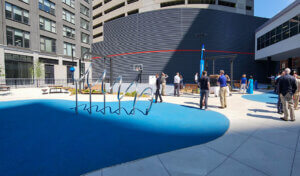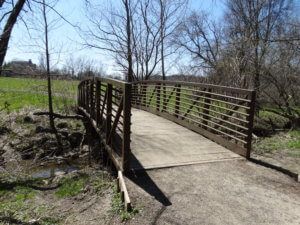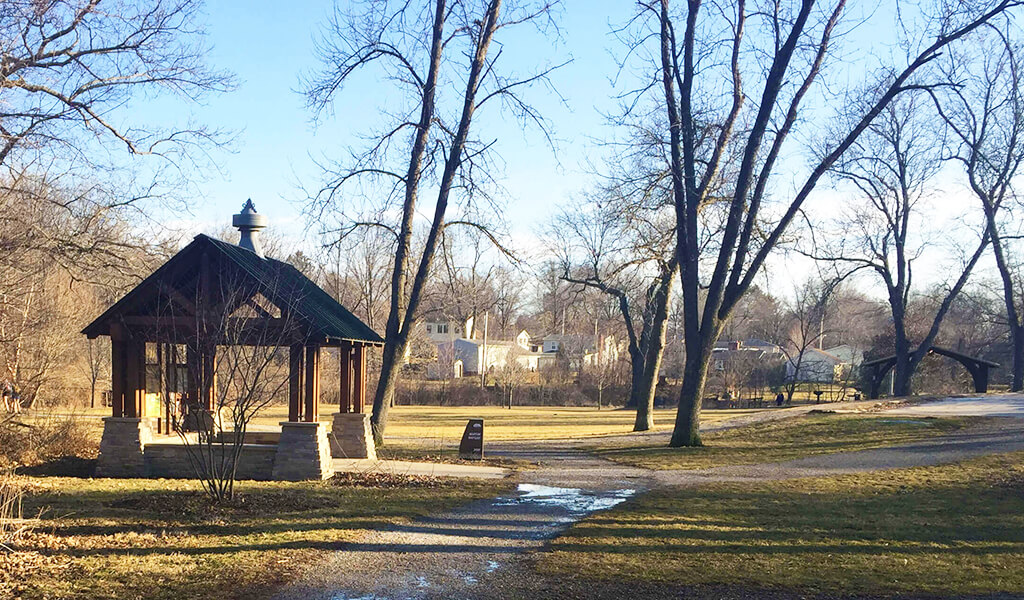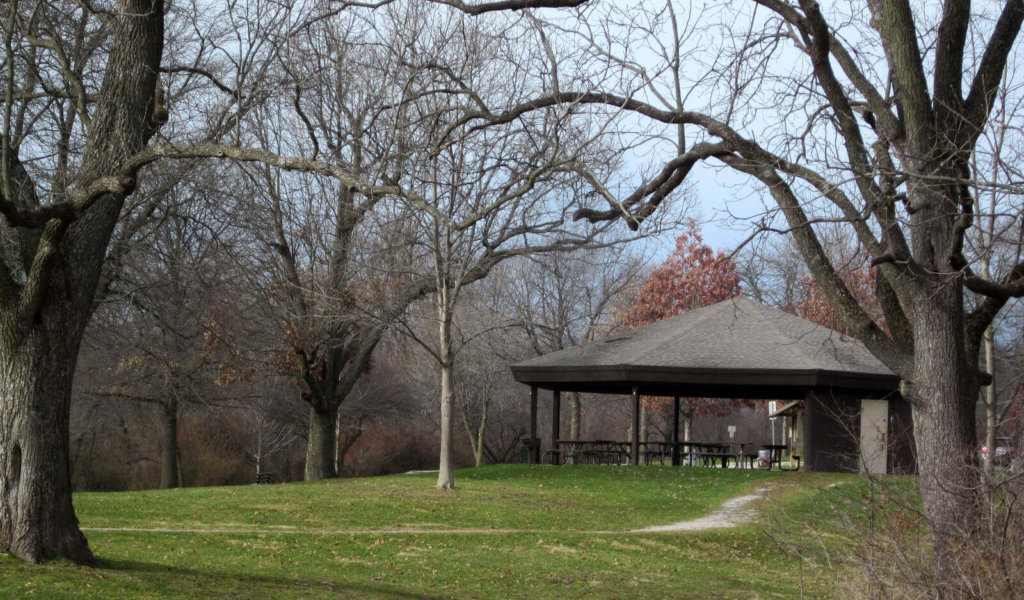
Improving Iowa City’s Hickory Hill Park
Hickory Hill Park preserves 185-acres of wilderness in northeastern Iowa City not far from downtown featuring wooded hillsides, established prairie, open fields, trails, and streams. Snyder & Associates was chosen to provide park design and master planning services for improvements.
During the design process at a public engagement meeting, the Advisory Committee, comprised of city staff and members of the Friends of Hickory Hill Park, and the public identified the park’s strengths and weaknesses along with project goals and objectives.
Strengths
- Tremendous community resource
- Heavily used trails and picnic facilities
-

Angled view of the Hickory Hill Bridge
Filled with natural beauty providing a unique, tranquil setting within the City
- Strong volunteer group that helps to promote and maintain the park
- Year-round outdoor recreational opportunities
- Resource for nature education programs and birding
- Diversity of native plant communities
- Assorted trail routes
Weaknesses & Concerns
- Lack of visibility and entrance signage
- Lack of maintenance access, particularly to the northern and northeastern areas of the park
- Muddy/eroded trails and bridge damage due to flooding and unmanaged stormwater drainage
- Confusing trail system due to multiple user-made paths and a lack of wayfinding signage
- Concerns about dog walkers allowing dogs off their leashes
- Unauthorized camping in the park
- A variety of site amenity styles creates a lack of identity
- Need for additional invasive species control and the removal of dead trees on or near trails
- Underutilized neighborhood park space at Bloomington Street and Conklin Avenue entrances
- Streambank erosion from increased runoff and stream flows
Project Goals & Objectives
- Improve signage throughout the park
- Address erosion and flooding concerns along trails, bridges, and Ralston Creek
- Review park programming
- Improve park accessibility for all users
- Improve maintenance access
- Evaluate existing trail routes and options for trail surfacing materials
- Prioritize improvements for future funding assistance
Three Trail Types
To achieve project goals and objectives, three trail types are proposed.
- Primary Trails—Paved surface trail eight to ten feet wide. This would improve park access and be built to meet Americans with Disabilities Act (ADA) guidelines.
- Secondary Trails—Granular surface trail six to eight feet wide to improve access and maintenance routes into the park’s core.
- Primitive Trails—Natural surface trail of bare ground, mown grass, or mulch chips. Drainage improvements and trail rerouting would occur along the trails to reduce erosion and wetness.
The park design process involved site analysis, concept development, steering committee and public input meetings, master planning, cost opinions, and phasing.
Two concept plans were developed with public and advisory feedback before the development of the final master plan. A final report was prepared which summarized the entire design process with proposed recommendations for implementation over a 15-year period. Learn more by viewing the Hickory Hill Park Master Plan.

